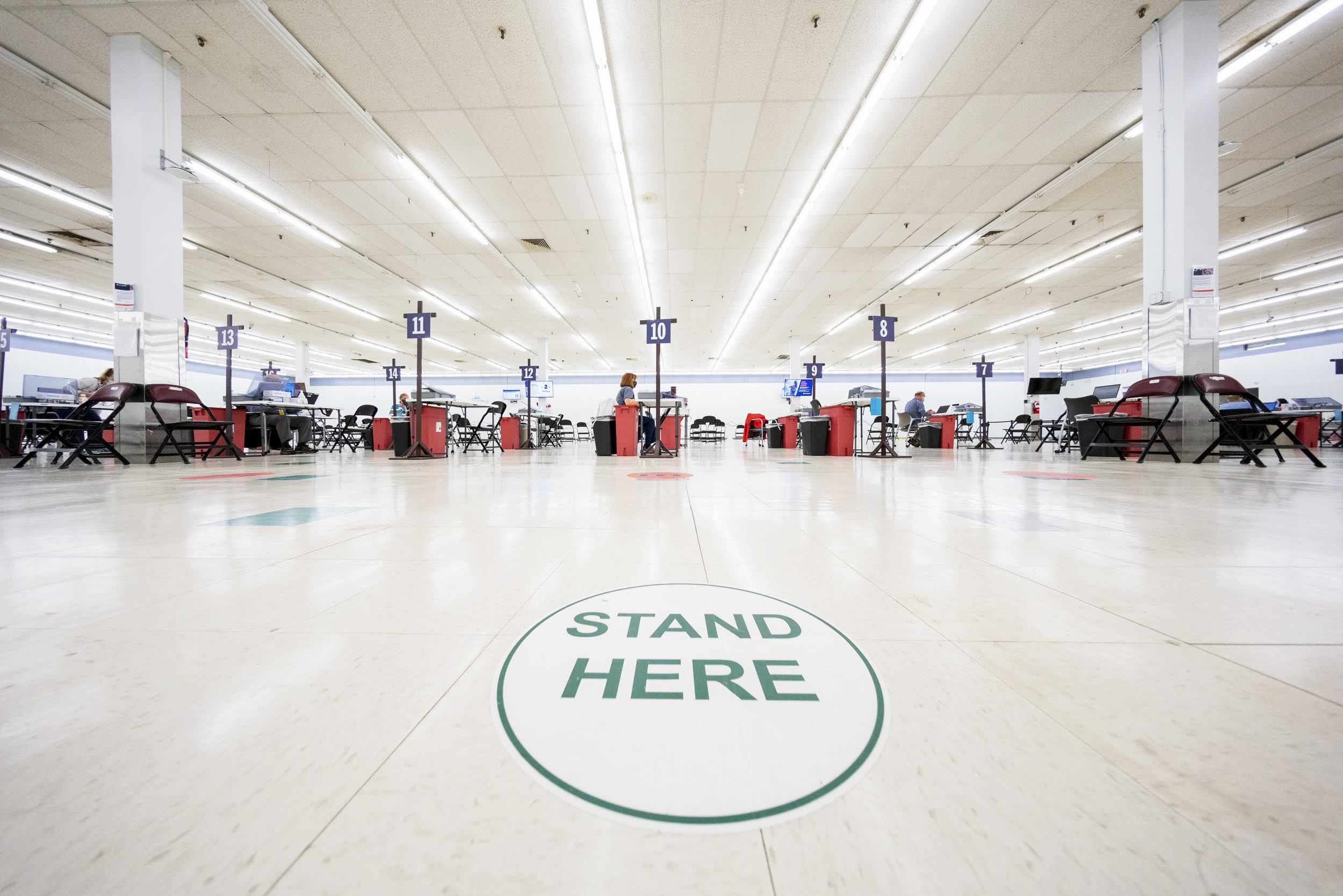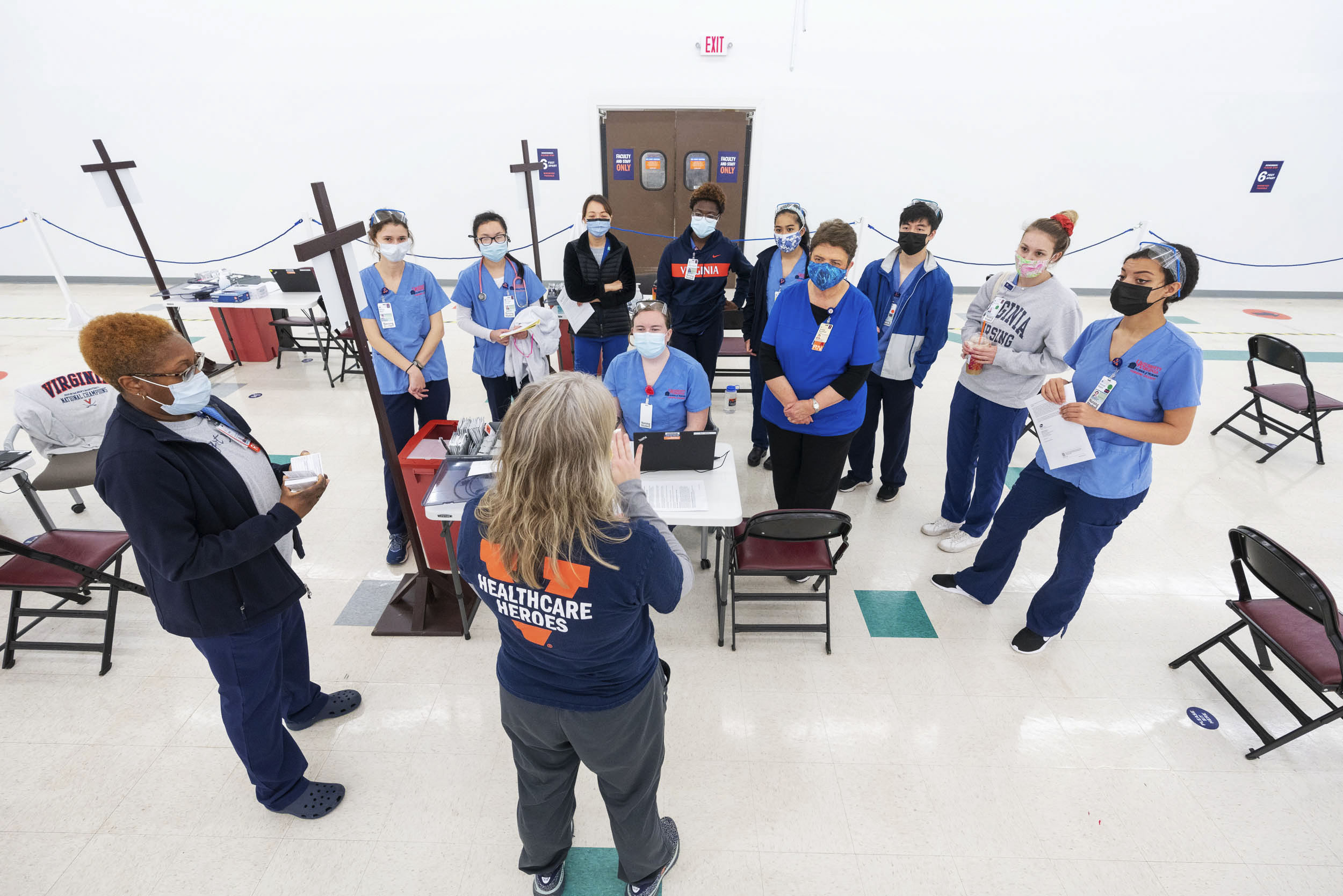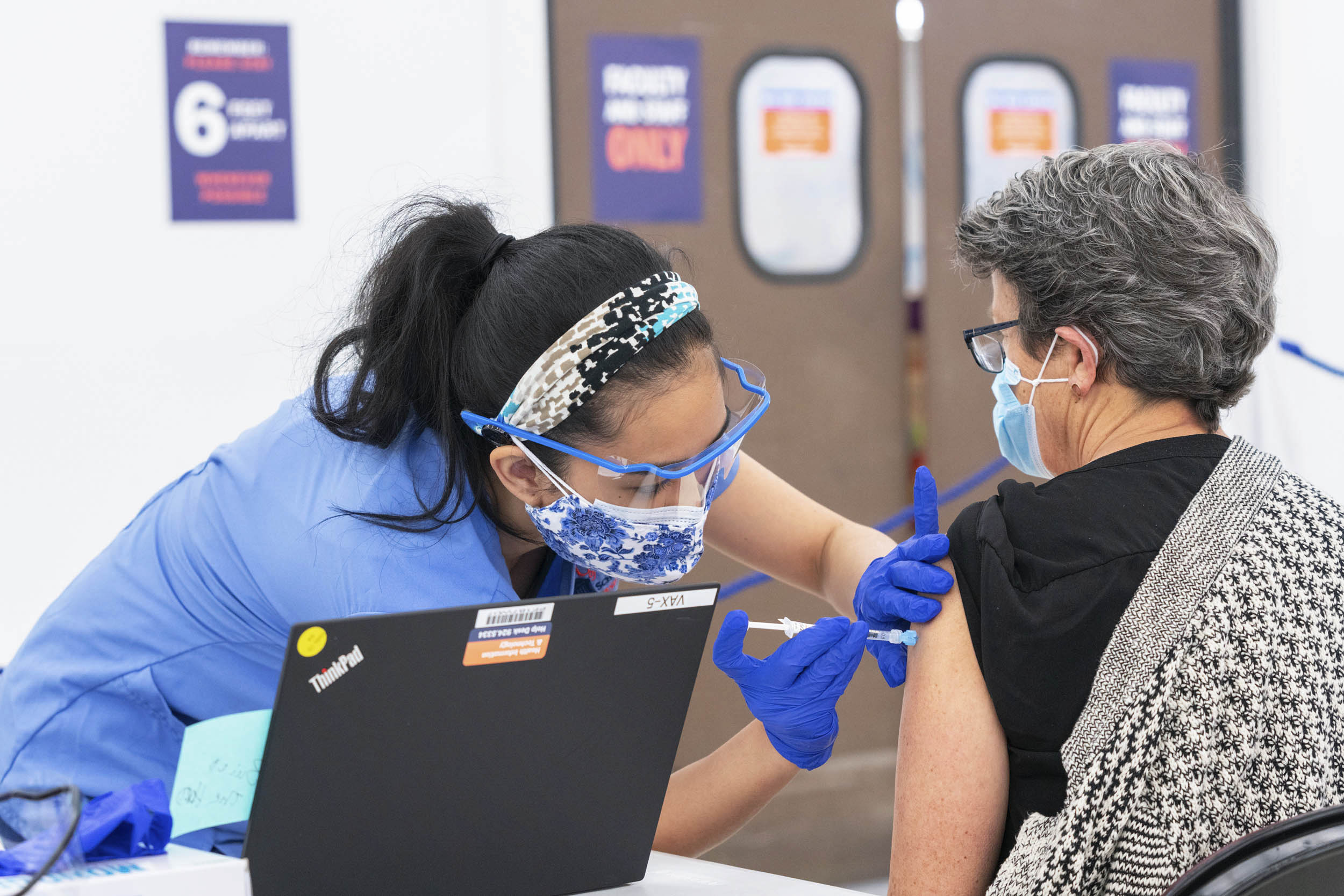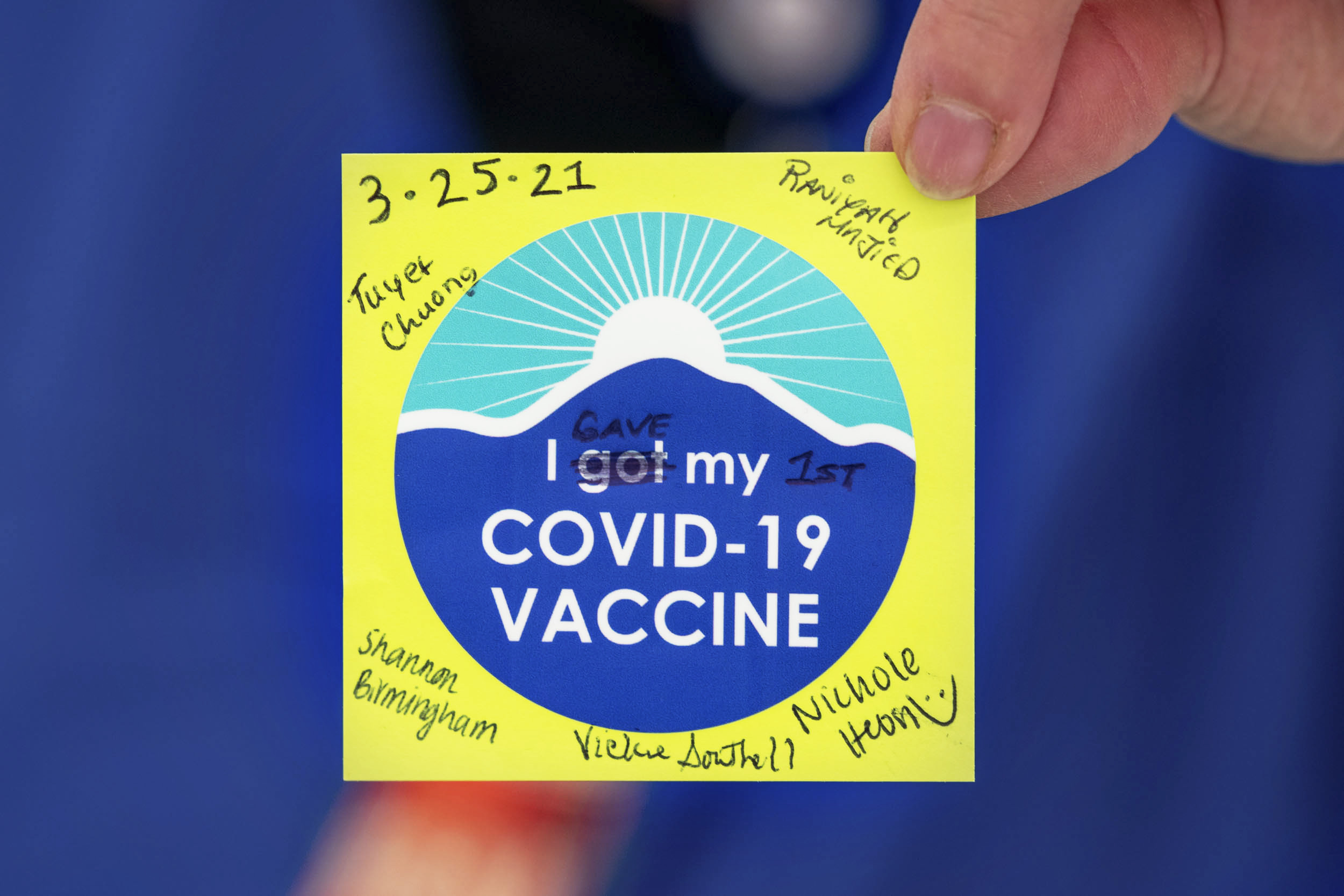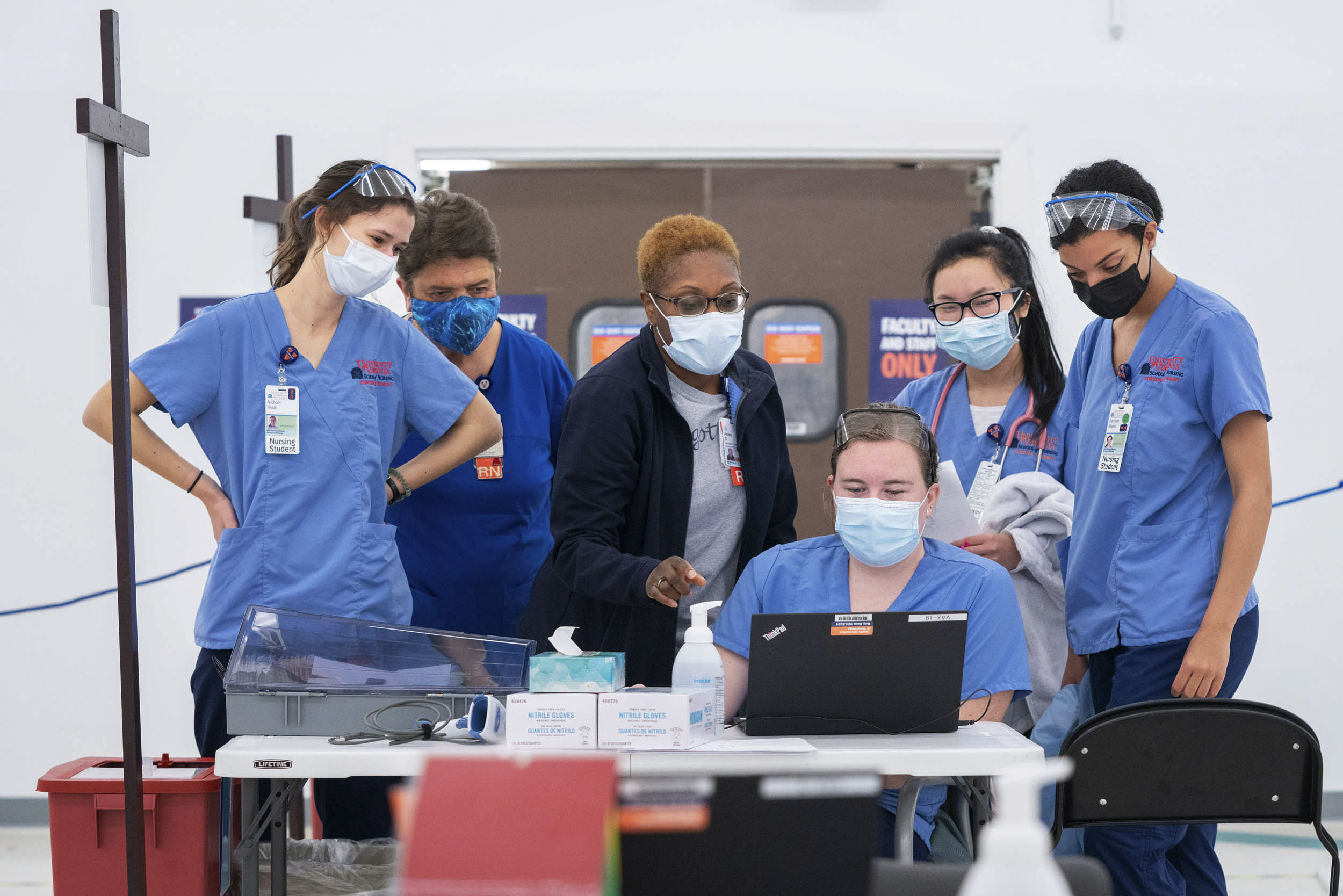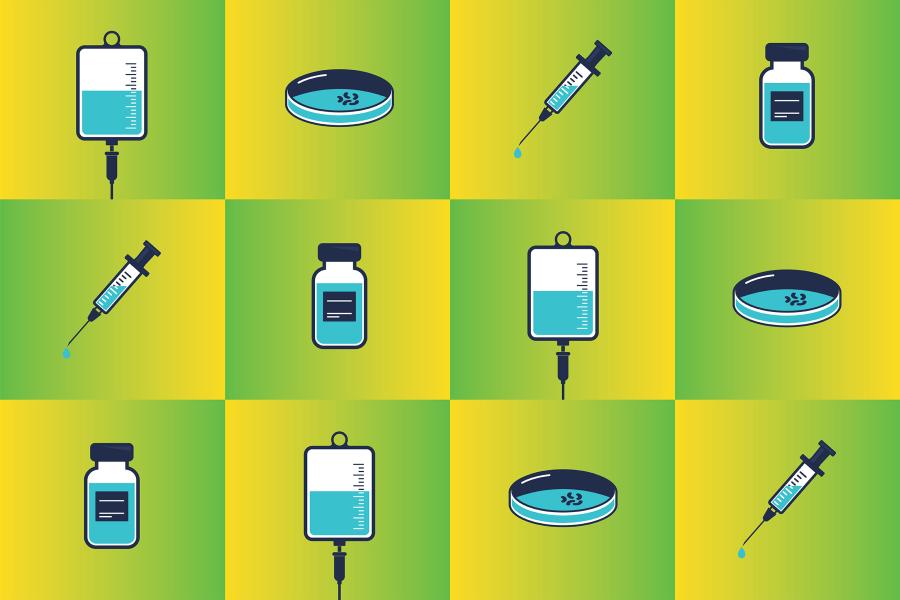One day a few weeks ago, University of Virginia first-year medical student Karina Navarro made her way to a recreation center in Nelson County, about 30 minutes outside of Charlottesville.
There, she helped Spanish-speaking community members, many of them migrant farm workers living in nearby camps, receive their first doses of a COVID-19 vaccine.
“It was extremely rewarding and eye-opening, and I was just so happy to be helping the community and making sure that these people, who are essential workers, get access to the vaccine,” said Navarro, who is from Washington, D.C., and whose family is Colombian.
“One of my favorite things when I am translating is just chatting with people casually, learning about their families and just trying to joke with them and bring their nerves down,” she said. “That is the whole reason I went into medicine – making connections with people.”
